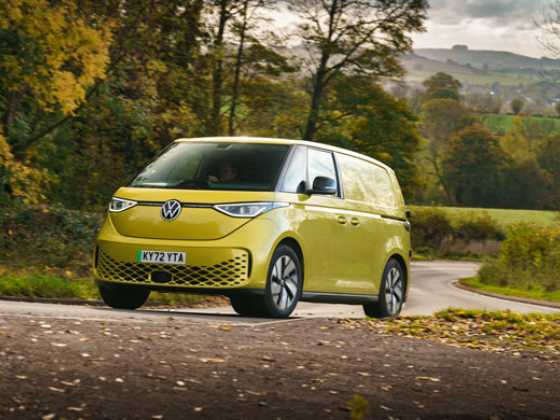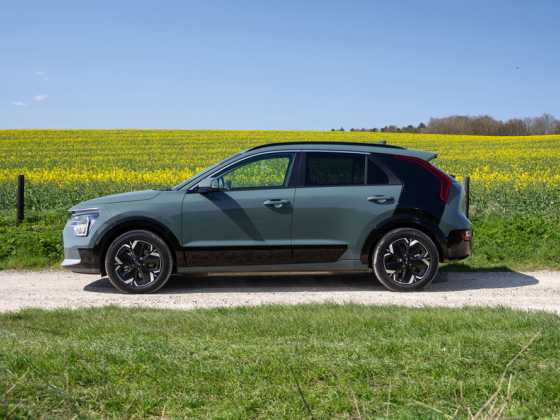DS 3 Prestige BlueHDi 120
The Citroën C3-based DS 3 was launched in January 2010 as the first model in a new wave of vehicles which referenced the style and glamour of the classic 1955 Citroën DS. It aimed to feather Citroën’s nest and bring a whole range of premium‑quality and stylish models to the French manufacturer’s portfolio.
 The larger DS 4 arrived the same year, while the MPV-like DS 5 followed in 2011. To push these more expensive and higher-quality models upmarket, the standalone DS brand was launched at the 2015 Geneva Motor Show. Since then – and in a nine-month turnaround – all models have lost their ‘Citroën’ branding and are now simply named ‘DS’.
The larger DS 4 arrived the same year, while the MPV-like DS 5 followed in 2011. To push these more expensive and higher-quality models upmarket, the standalone DS brand was launched at the 2015 Geneva Motor Show. Since then – and in a nine-month turnaround – all models have lost their ‘Citroën’ branding and are now simply named ‘DS’.
What is it?
In a reverse of the original car, the latest DS 3 is the last in the line of the DS model triumvirate to be refreshed. The new DS 3 was launched in February 2016, and was presented to the UK market first. Surprisingly, this country is the most successful for the premium supermini – 16,500 examples were sold here last year. Even the French buy fewer DS 3s, with only 16,000 cars finding homes there in 2015. Since the original DS 3’s launch five years ago, over 390,000 have been sold globally, and it is among the best-selling premium small cars. Over 100,000 have been sold in the UK alone, which takes 25 per cent of all DS 3 sales.
The new-for-2016 DS 3 ushers in a fresher ‘face’ and minor styling tweaks. Externally, the DS 3 looks fresher and now resembles its DS 4/DS 4 Crossback and DS 5 siblings much more readily. At the front, the chrome grille extends its ‘wings’ into the LED headlights (which use 67 per cent less energy than standard units) making the car appear wider.
Sensibly, DS has left the DS 3’s notable styling elements as they were: the floating roof and the ‘shark fin’ B-pillar remain. On the Cabrio version we also tested, the roof is as before – the roof’s side panels mean it’s not a ‘total’ cabriolet, but it certainly gives enough of a feeling of one.
How does it drive?
The previous DS 3 was always one of the more fun cars to drive in the segment and the new one feels a little sharper, even though DS claims no major mechanical changes under the skin. The 1,560cc four‑cylinder turbocharged direct injection diesel engine pulls strongly with 285Nm/210lb ft of torque available from 1,750rpm – 0-62mph is a claimed 9.3 seconds and the car feels that quick. The six-speed gearbox is positive, with a ‘chunky’ feel, while very little wind or road noise filters through into the nicely-trimmed cabin. Refinement is good, too, and the BlueHDi engine is quieter than most diesels, especially those found in Volkswagen Group cars.
The ride, as you’d expect from a car with semi-sporty pretensions, is on the firm side, but rarely uncomfortably so. The steering has a nicely-weighted feel and strikes a good balance between being neither too light or too heavy. Overall, the new DS 3 feels quite a quick, direct and fun to drive small car in the same way its predecessor (GreenFleet, issue 64) did. The interior of the Prestige model (the only trim level available on our drive) feels suitably premium, and the leather-wrapped steering wheel, sports-designed dials and body-coloured dash panel all add to the DS 3’s upmarket appeal.
As with the exterior, not much has changed with the basic design of the cabin, but the new seven-inch colour touchscreen means there are now twenty fewer buttons than before. The system works well, but the main ‘Menu’ button is quite a way away from the screen itself, which can make selecting modes on the move a little tricky. The system’s interface is clearly derived from other PSA models – no bad thing – and includes a driving data section which displays mpg and and other eco-driving stats.
How economical is it?
Our test cars were the most powerful BlueHDi 120 versions with 118bhp and 94g/km. DS quotes an official 78.5mpg on the combined cycle for these models. Over our varied fast A-road and motorway test routes we averaged 51.3mpg, which although not representative of an especially economically‑minded driving style is still creditable for a car which isn’t billed as an eco‑focused model. The lower‑powered 87g/km BlueHDi 100 models will no doubt better this and return a claimed 83.1mpg on the combined cycle, while petrol models range from 50.4 to 65.7mpg on the same parameter. Incidentally, in most cases DS 3 Cabrio values are the same as those of the hatchback.
What does it cost?
The new DS3 range is available in three foundation trim levels: Chic, Elegance, and the Prestige of our test cars. The Chic 107g/km PureTech manual kicks off the DS 3 family at £13,995 and features items such as 16-inch alloy wheels, air conditioning, cruise control, DAB radio, seven-inch colour touchscreen, Bluetooth, and mood lighting. Opt for the Elegance models and you gain dark-tinted rear windows, LED front fog lights, rear parking sensors, sports seats, aluminium sports pedals, gloss black interior trim and the DS Connect emergency assistance system. Elegance models start at £16,395.
The highest rung of the DS 3 foundation trims, Prestige versions of DS’ premium supermini add luxuries such as 17-inch alloy wheels, contrasting roof colour, rear spoiler, chrome exhaust pipes, xenon headlights, an auto‑dimming rear view mirror, folding wing mirrors, auto lights and wipers, front parking sensors, eMyWay satellite navigation system, an audio upgrade, Nappa leather steering wheel, as well as DS’ Active City Brake system which automatically applies the brakes if the car senses an impending collision under 18mph. Prestige models begin at £19,795.
The ‘Exclusive Collection’ of DS 3 models spans Ultra Prestige (from £20,795), Performance (from £20,495) and Performance Black (from £22,495) additional trim levels. These higher-specification models offer even more upmarket options such as DS monogrammed mirror roof decals, a reversing camera, leather upholstery in a watch strap-style pattern, and in the case of the Performance and Performance Black versions, a Torsen limited-slip differential.
DS 3 Cabrio models are available in the same six trim levels as the hatchback, and start at £16,295 for the Chic PureTech 82 version. The £24,795 Performance Black model is at the top of the DS 3 Cabrio tree. VED rates are the same as the hatchback models, too, while the BIK rates on the PureTech 82 and PureTech 110 S&S EAT 6 automatic versions rise one figure over their tin-top cousins to 17 per cent. As with the older car personalisation plays a big part in the DS 3’s make-up and DS claims there are now 78 body and roof colour combinations, with contrasting roof panels priced between £250 and £980 depending on finish.
Four fabric roof colour options are available for the DS 3 Cabrio, and the French marque claims that in total, over three million personalisation options are open to DS 3 buyers.
How much does it cost to tax?
Emissions for the refreshed DS 3 range start as low as 87g/km for BlueHDi 100 versions, rising to 129g/km for the speedier THP 165 variant. Even the most powerful 207bhp DS 3 Performance model comes in at 125g/km. That means VED of between £0 for the eight models which are 100g/km and under, while the remainder of the DS 3 range sits between £20 and £110 per year after the first year rate of £0 which applies to all new DS 3 variants. Benefit in kind tax rates are 15, 16 and 20 per cent. DS’ new three-cylinder PureTech 130 petrol model has impressively low emissions of 105g/km.
Martin Gurney, Director, Fleet and Used Vehicles at PSA Peugeot Citroën, said that the DS 3 has become one of PSA’s best-selling fleet models in recent years: “DS 3 has carved out several niches in the fleet market and has proved popular within the public sector and driving schools markets and more recently, it has become particularly successful in the growing salary sacrifice market.”
Gurney continued: “With its ability to be personalised, the DS 3 model mix has tended to be quite rich and the BlueHDi versions have proved popular with their low CO2 helping the driver on taxation and their fleet manager on fuel economy. Half of current DS 3 sales go to the fleet market and we expect a similar split for the New DS 3. Whilst our BlueHDi engines will continue to be popular, we expect growing interest and sales from our award-winning three‑cylinder PureTech petrol engines.”
 Should I buy one?
Should I buy one?
The DS 3 was always one of the more stylish small cars in the sector, and the new one does nothing to detract from that. However, business users will be more interested to learn that the enhanced technology, better quality and cleaner, quieter engines – DS claims they’re best-in‑class – mean the DS 3 is more user-friendly, premium‑feeling and cleaner than ever before. It’s largely a case of ‘plus ça change, plus c’est la meme chose’, or carry on as you were then, only this time with a little more environmentally-attuned joie de vivre.
Further Information
www.dsautomobiles.co.uk









